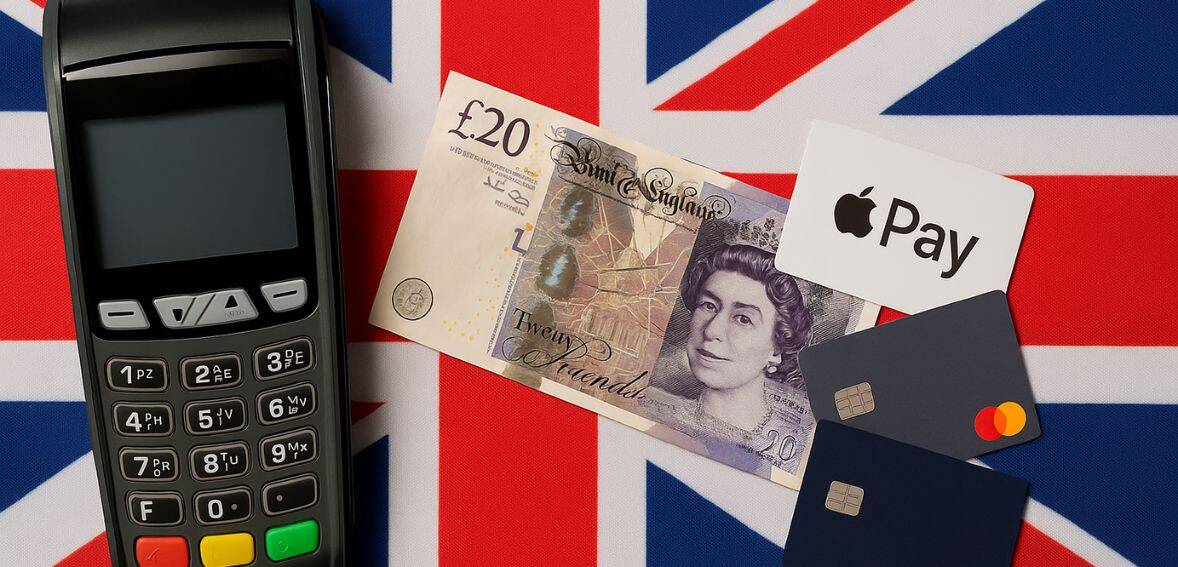
By dinesh June 11, 2025
By 2025, companies in the UK will be under more and more pressure to control expenses while maintaining their competitiveness. Processing fees for card payments are one important but frequently disregarded expense. Understanding the nuances of card-processing fees—interchange fees, markups, and additional charges—is crucial for cost control, regardless of whether you’re running a small business or a major retail chain.
The main elements of card processing fees in the UK are broken down in this article, with an emphasis on what they are, how they impact your bottom line, and how companies can bargain with payment processors for better terms. Equipped with this understanding, you can optimize your payment systems and make well-informed choices.
The Basics of Card-Processing Fees

Merchants must pay card-processing fees in order to accept payments using credit or debit cards. Typically, these fees consist of three components:
Interchange Fees: Usually the biggest part of the fee, these are set by the banks that issue the cards (such as Visa or Mastercard).
Mark-ups: Added by payment processors (like PayPal, Square, and Worldpay), these indicate the profit made by the processor.
Additional Fees: Depending on the service provider, these could include monthly account fees, setup fees, statement fees, and other charges.
Depending on the kind of transaction (online or in person), the card type (debit or credit), and the merchant’s industry, each fee structure may differ.
What are Interchange Fees
Every time a card payment is made, the bank that issued the card charges the payment processor an interchange fee. These fees make up the majority of businesses’ card processing expenses and are usually non-negotiable. Card networks (Visa, Mastercard, etc.) set them, and they can change based on a number of factors:
Card type: Compared to ordinary consumer debit cards, premium credit cards, such as business or rewards cards, frequently have higher interchange fees.
Transaction type: Interchange fees are typically higher for card-not-present transactions (such as online purchases) than for in-person transactions.
Merchant sector: Some industries, like travel, gambling, and subscription services, may be subject to higher fees because of the perceived risk of fraud or chargebacks.
The typical UK interchange fee for domestic consumer credit cards as of 2025 is roughly 0.9% to 1.3% of the transaction value, though this can be higher for certain cards or transactions.
Mark-ups: How Payment Processors Add Costs

Payment processors apply their own markup after the interchange fee has been decided. Here is where the prices of various service providers can differ greatly. This fee is levied by payment processors to offset their own profit margins and operating expenses. In the UK market, markup structures typically fall into one of two categories:
Fixed-rate pricing: This is a simple model in which, independent of the type of card or transaction volume, the merchant is billed a predetermined percentage of each transaction. Despite being straightforward, this pricing strategy might not always be the most economical for companies with large sales volumes.
Interchange-plus pricing: In this model, a fixed markup is added to the interchange fee. Because merchants can see exactly how much they are paying in interchange fees and the processor’s profit margin, this is thought to be more transparent. The mark-up may range between 0.2% and 0.4% per transaction.
Usually ranging from 0.2% to 0.5% of each transaction, the markup can change depending on a number of variables, including the volume of transactions, the type of business, and the pricing strategy used by the payment processor.
Additional Fees: Hidden Costs of Card Processing
Many payment processors impose a number of other fees in addition to interchange and markup fees. If not properly controlled, these can greatly increase your overall processing expenses. Among the most typical extra charges are:
Monthly account fees: A typical cost associated with keeping your merchant account active. Depending on the supplier, this could be anywhere between £10 and £50.
Set-up fees: To set up your account, some processors charge an initial fee that can range from £50 to £200.
Transaction fees: These are nominal charges for every single transaction, such as £0.10 to £0.30.
Chargeback fees: If a customer contests a charge, retailers may be subject to a chargeback fee, which can be anywhere between £15 and £30.
PCI compliance fees: To make sure that companies are adhering to security standards, PCI compliance is necessary. The annual cost of these fees can vary from £50 to £200.
It’s critical to understand these fees because they can mount up quickly, particularly for companies that handle a lot of transactions. Additionally, some providers might charge for extra users or terminals. These backend costs are often tied to the infrastructure that supports secure transactions — notably, the role of payment gateways, which ensure sensitive data is encrypted and passed safely between merchants, processors, and banks.
Factors That Influence Card-Processing Fees in 2025

A number of variables affect how much a company pays for card-processing services, in addition to the fundamental elements of interchange and markup fees. You can optimize your payment processing strategy or cut expenses by being aware of these factors:
Transaction Volume: A company can negotiate a better deal the more transactions it handles. Because the processor gains from the volume, high-volume companies frequently pay lower markups.
Industry Type: As previously indicated, because of the perceived risk of fraud or chargebacks, some industries—such as travel, subscription services, and high-risk businesses—are subject to higher card-processing fees. You can foresee possible additional expenses by being aware of how your industry is categorized.
Business Size: Because they conduct fewer transactions and provide processors with less steady income, small businesses usually pay higher transaction fees. However, because of the complexity and volume of their transactions, larger businesses might have to pay higher fees overall.
Payment Methods: Fees are also impacted by the kind of payment method (credit, debit, contactless, or mobile). For instance, processing fees for contactless payments might be less than those for credit card payments.
How to Negotiate Card-Processing Fees

Businesses must be proactive in their negotiations with payment processors due to the variety of factors that impact card-processing fees. The following methods will assist you in reducing your fees:
Examine several providers: Don’t accept the first one that comes up. To find the best deal on rates, services, and customer support, compare several processors. Instead of focusing only on processing rate, consider total cost of ownership (TCO).
Negotiate Mark-Ups: You might have more negotiating power if you’re a large retailer or a member of a trade group. Don’t be scared to ask for a better deal because larger companies frequently have more wiggle room to negotiate lower markups.
Examine your contract: Go over your processing agreement’s terms carefully. After the first year, some processors offer promotional rates that go up. Be mindful of long-term contract obligations or hidden costs.
Boost Transaction Volume: Increasing the volume of your transactions is one of the best strategies to reduce your card-processing fees. Your ability to bargain for lower prices will increase as your sales increase.
Examine Other Payment Options: Examine other payment options like digital wallets or Buy Now, Pay Later (BNPL) models, which may offer lower costs and more flexibility for both merchants and customers depending on the business model.
Impact of Contactless and Mobile Payments
In the UK, contactless and mobile payments are growing in popularity as of 2025. When compared to conventional credit card payments, both payment methods typically have lower processing fees. Businesses and consumers alike gain from this trend since it allows them to conduct transactions swiftly and safely without incurring additional fees for physical card processing.
Businesses can lower transaction costs and draw in tech-savvy clients by accepting mobile payments, particularly with apps like Apple Pay, Google Pay, or other digital wallets. Because contactless transactions are less likely to be fraudulent than chip-and-pin or swipe payments, merchants can actually frequently negotiate lower fees.
Preparing for Future Changes in the Payment Landscape
As 2025 draws near, technological advancements, alterations in regulations, and changes in consumer behavior are all contributing to the payment landscape’s rapid evolution. Businesses that wish to stay competitive and maintain the effectiveness and affordability of their payment systems must stay ahead of these changes. The ongoing growth of digital wallets and mobile payments is one of the most important trends.
Businesses that haven’t yet embraced contactless and mobile payment methods, such as Apple Pay and Google Pay, may find themselves at a competitive disadvantage as consumers’ preferences for these methods grow. In addition to being quicker and safer, these payment options frequently have lower processing costs, which appeals to both customers and businesses.
The cost structure of payment proc”ssin’ will continue to be influenced by regulatory changes in addition to technological advancements. Stricter customer authentication procedures under Strong Customer Authentication (SCA) and the implementation of PSD2 (Payment Services Directive 2) are intended to improve payment security.
Although these rules help prevent fraud, companies that don’t prepare well may have to pay more as a result of them. Businesses may have to pay more up front for things like training, compliance initiatives, and updated payment systems as a result of the additional security measures. Businesses may experience a decrease in fraud-related losses after these adjustments are put into place, though, which would justify the initial outlay.
Moreover, we can anticipate increasingly advanced fraud prevention and transaction processing capabilities as payment processors embrace AI and machine learning technologies. In the long run, these innovations will probably save businesses money on operating expenses.
Businesses will need to keep updating their systems and staying flexible with new payment technologies, though, if they want to take advantage of these developments. Businesses can guarantee regulatory compliance, improve future planning, and eventually reduce their overall card-processing fees by keeping up with these developments.
Conclusion
In 2025, card processing fees are an unavoidable expense of conducting business, but they don’t have to be prohibitively expensive. You can process payments more effectively if you are aware of the main elements of fees, such as markups, interchange rates, and other expenses.
Costs can be decreased by negotiating with processors, evaluating several offers, and accepting alternative payment methods, regardless of whether you’re running a large retail operation or a small business. Being knowledgeable and adaptable will help you capitalize on the newest developments and sustain profitability in a market that is becoming more and more competitive as the card payment landscape changes.